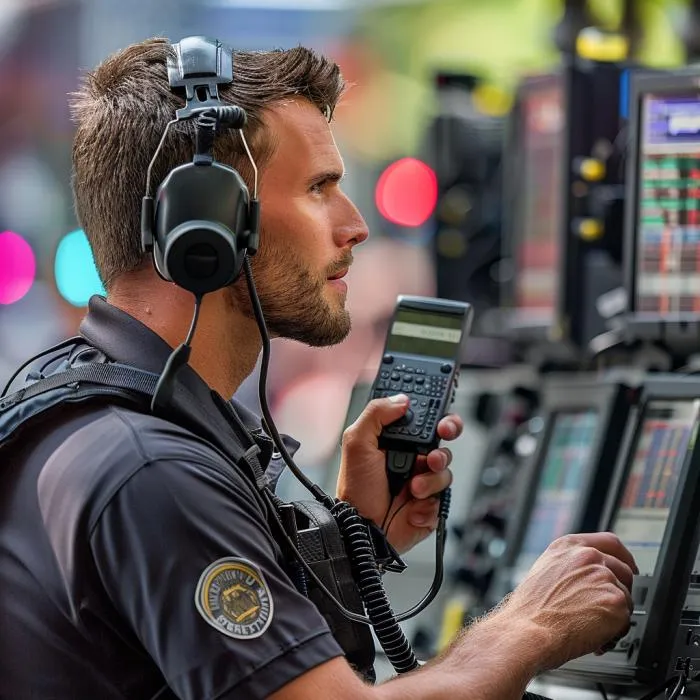
Emergency Responder Radio Communication Systems (ERRCS): Ensuring Public Safety
In the realm of public safety, effective communication is crucial for emergency responders to perform their duties efficiently. Emergency Responder Radio Communication Systems (ERRCS) are essential in ensuring that first responders have reliable communication channels within buildings, especially during emergencies. At DAS University, we focus on educating professionals about the critical role of ERRCS in enhancing public safety. This blog post explores the importance of ERRCS, the challenges it addresses, and best practices for implementation.
Understanding ERRCS
Emergency Responder Radio Communication Systems (ERRCS) are designed to enhance in-building wireless communication for public safety personnel, including firefighters, police officers, and emergency medical services. ERRCS ensure that these responders can maintain clear and uninterrupted communication throughout a building, which is vital for coordinating efforts, making informed decisions, and saving lives during emergencies.
Importance of ERRCS in Public Safety
Reliable Communication Coverage
Comprehensive Coverage: ERRCS provide reliable communication coverage throughout a building, including hard-to-reach areas like basements, stairwells, and underground parking garages.
Signal Penetration: These systems enhance signal penetration through thick walls and other structural barriers, ensuring that emergency responders can communicate effectively in all areas of the building.
Compliance with Safety Regulations
Building Codes: Many jurisdictions require buildings to have ERRCS to comply with public safety communication standards. Ensuring compliance helps avoid legal issues and enhances occupant safety.
Fire Codes: ERRCS often meet specific fire code standards, ensuring that communication systems function correctly during a fire emergency, aiding firefighters in their response efforts.
Improved Coordination and Efficiency
Interagency Communication: ERRCS facilitate better communication between different emergency services, such as fire, police, and medical, leading to more coordinated and effective responses.
Operational Efficiency: Reliable communication enhances the overall efficiency of emergency operations, from routine checks to large-scale crisis management.
Enhanced Occupant Safety
Evacuation Management: ERRCS support effective evacuation management by ensuring that emergency personnel can communicate with each other and with building occupants, providing clear instructions and updates during an emergency.
Challenges Addressed by ERRCS
Signal Obstruction
Building Materials: Modern construction materials like concrete, steel, and low-emissivity glass can obstruct wireless signals. ERRCS mitigate this issue by enhancing signal strength and coverage.
Complex Layouts: Large buildings with multiple floors and complex layouts can create communication dead zones. ERRCS ensure comprehensive coverage throughout the entire structure.
Network Congestion
High Traffic: During emergencies, communication networks can become congested with high traffic volumes. ERRCS provide dedicated channels for emergency responders, reducing congestion and ensuring reliable communication.
Power Outages
Backup Power Solutions: ERRCS are often equipped with backup power sources, such as batteries or generators, to maintain communication capabilities during power outages caused by disasters.
Best Practices for Implementing ERRCS
Conduct a Comprehensive Site Survey
Assessment: Perform a detailed site survey to identify coverage gaps, potential interference sources, and specific communication needs.
Customization: Use the survey data to design a customized ERRCS solution that addresses the unique requirements of the building.
Engage with Local Authorities
Collaboration: Work closely with local fire departments, police, and other emergency services to understand their communication needs and ensure the ERRCS meets all public safety standards.
Regular Communication: Maintain open lines of communication with local authorities throughout the project to ensure all stakeholders are informed and involved.
Design for Redundancy and Resilience
Redundant Pathways: Design the ERRCS with redundant pathways to ensure that if one part of the system fails, communication can continue through alternate routes.
Backup Power: Implement backup power solutions to ensure continuous operation during power outages and other disruptions.
Ensure Compliance and Certification
Standards Compliance: Ensure the ERRCS complies with all relevant industry standards and regulations, such as NFPA and IFC codes.
Regular Testing and Certification: Schedule regular testing and certification to verify that the system meets all required performance standards and remains operational.
Implement Real-Time Monitoring and Maintenance
Monitoring Tools: Use real-time monitoring tools to continuously track the performance of the ERRCS and detect any issues promptly.
Proactive Maintenance: Conduct regular maintenance and updates to ensure the system remains effective and reliable.
Educate Building Occupants and Emergency Personnel
Training Programs: Provide training for building occupants and emergency personnel on how to use the ERRCS effectively during emergencies.
Awareness Campaigns: Raise awareness about the importance of ERRCS and how they enhance public safety within the building.
Real-World Applications of ERRCS
High-Rise Buildings
Complex Structures: High-rise buildings often have challenging layouts and materials that obstruct communication. ERRCS ensure reliable communication for emergency responders throughout the entire structure.
Hospitals and Healthcare Facilities
Critical Communication: In healthcare settings, reliable communication is essential for coordinating patient care and emergency responses. ERRCS provide the necessary coverage and support for medical personnel.
Commercial and Residential Complexes
Safety and Security: Ensuring reliable communication in commercial and residential complexes enhances safety and security for occupants, particularly during emergencies.
Transportation Hubs
Continuous Coverage: Airports, train stations, and other transportation hubs require robust communication systems to manage emergencies and coordinate responses. ERRCS provide reliable communication in these expansive areas.
Case Study: Successful ERRCS Implementation
Consider a large hospital that implemented an ERRCS to address communication challenges. Before installation, emergency responders experienced significant dead zones in critical areas such as stairwells and basements. After deploying the ERRCS, the hospital saw a marked improvement in communication reliability. During a recent emergency, medical personnel were able to maintain continuous communication, coordinate their efforts effectively, and provide timely patient care, demonstrating the life-saving potential of ERRCS technology.
Conclusion
Emergency Responder Radio Communication Systems (ERRCS) are essential for ensuring reliable communication during emergencies. By providing comprehensive coverage, supporting public safety networks, maintaining connectivity during power outages, and reducing network congestion, ERRCS enhance the ability of first responders to coordinate and perform their duties effectively. At DAS University, we are dedicated to educating professionals on the critical role of ERRCS in public safety and equipping them with the knowledge to implement and maintain these systems. Join us to learn more about enhancing safety through advanced communication solutions and become a leader in public safety enhancement.
4o
ChatGPT can make mistakes. Check important info.



